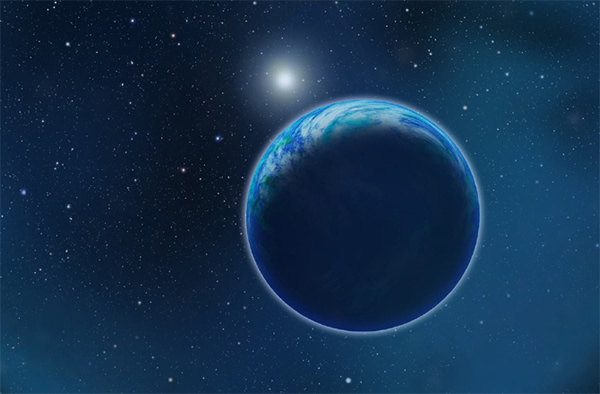Dead Stars Could Shine Light on Alien Life
With the list of planets beyond the solar system growing almost daily, scientists are eager to learn if any of the distant worlds actually are hosting life.
But even with a new generation of telescopes, scanning Earth-sized planets for the chemical fingerprints of life will be a time-consuming and tedious process.
First, scientists have to find planets that pass in front of their parent stars, relative to Earth’s line of sight, work that already is under way with NASA’s Kepler space telescope. Of particular interest are planets positioned the proper distance from their host stars so that, like Earth, they could have the right temperatures for liquid water on their surface. Water is believed to be necessary for life.
The trickiest step, however, will be to capture and analyze the tiny bit of starlight that passes through a transiting planet’s atmosphere for signs of oxygen and other potential biomarkers.
Two astronomers think they can better the odds by homing in on a particular type of star called white dwarfs, which are the leftover remains of dead stars that have shrunken down to about the size of Earth.
A habitable exoplanet orbits a white dwarf star -- could systems like these reveal the chemistry of exoplanetary atmospheres?
It is precisely their diminutive size that make white dwarfs an attractive target in the hunt for life beyond Earth, says Harvard University astronomer Avi Loeb.
During a transit, an Earth-sized planet in a white dwarf’s habitable zone would block out a sizable portion of its parent star’s light, if not completely occult the star. That geometry allows for a much quicker and easier scan of a planet’s atmosphere.
“If there is an atmosphere around the planet, this is a great opportunity to actually learn about the composition,” Loeb told Discovery News.
The idea of a dead star hosting planets is not as far-fetched as it may sound. Astronomers have found that at least 20 percent of white dwarf stars are littered with heavy elements and debris rings that are believed to be the shredded remains of planets.
Whether any planets could exist in a white dwarf’s habitable zone, which is about 100 times closer to the star than Earth is to the sun, has yet to be determined.
“We expect to find planets in stable orbits around white dwarfs. The tricky part is to find them in the habitable zone. Because the stars are so much smaller, the habitable zone is going to be very close in,” said astronomer Carolyn Brinkworth with the California Institute of Technology.
One way a planet might find itself in a white dwarf’s habitable zone is if it were gravitationally kicked inward by a larger planet farther away.
“Obviously, you don’t rule anything out, but I think it would take a very, very well-placed kick and luck to get something into a habitable zone. I think your chances of that are fairly slim,” Brinkworth told Discovery News.
Nevertheless, Loeb argues it’s worth a look.
“We know from the history of astronomy that whenever people tried to guess what the sky is like, they were very often wrong,” Loeb said.
Much of the groundwork for scanning suitable white dwarf stars can be done with small telescopes that exist today. Then, after NASA’s James Webb Space Telescope is in orbit, follow-up observations of prime candidates can be done in just five hours, computer models show.
“It’s practical to do it and it doesn’t require huge amounts of funds. You can use existing facilities and existing surveys that people will do anyway. You just have to have this goal in mind and not be distracted by prejudice,” Loeb said.
“Some people would say ‘Oh, but these are environments are so different than what we are used to. We want an Earth-like planet around a sun-like star.’ The problem is it’s impossible with existing facilities -- and with those that will be built in the next decade -- to find evidence of oxygen, for example, in those atmospheres.
“We outline a practical approach with which you can search for those biomarkers,” Loeb said. “This is the best target to go after with a reasonable chance of finding something in the next decade.”
The research appears in the Monthly Notices of the Royal Astronomical Society.(May 2, 2013 11:48 AM ET // by Irene Klotz)












